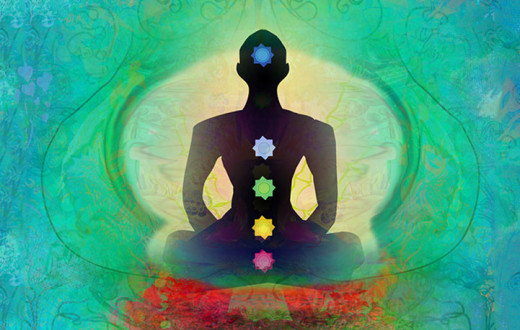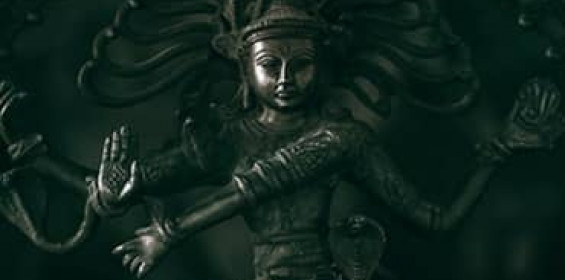The herald for good luck and of other special relevance, rangoli is a unique practice that depicts various art forms. Most Indian festivals are incomplete without Rangoli and Diwali is one of them. Rangoli designs are usually made with rice powder, colored sand, flowers, diyas, and petals on the floor surfaces of households. Along with glorifying the look of the house to mark the festivities, Rangoli is also believed to have spiritual significance.
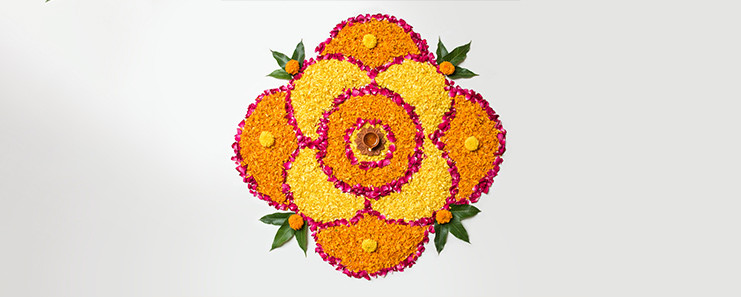
Story Behind Rangoli
The origin of Rangoli is multifaceted. Let’s take a look at some of the many legends:
Once Lopamudra, the wife of great Rishi Agastya ( known for his contributions to Sanatana Dharma) wanted to help her husband to worship Gods. She used rice, lentils, flowers, spices, etc. to make rangoli designs and requested the five elements-sky, earth, wind, water, and fire to give her colors to make the design look beautiful for the Yagyakunda Temple. She was granted the wish and the legacy of colors continues even to this day.

A kingdom mourning the death of a boy prayed to Lord Brahma with deep devotion to revive the boy. Touched by his devotees’ call, Lord Brahma appeared and asked the king to create a portrait of the boy on the floor. This was the first ever Rangoli made, as mentioned in the oldest Indian book of paintings Chitralakshana, that brought the boy back to life.
Rukmini (Lord Krishna’s wife) started the Rangoli pattern in Dwarka, Gujarat.
God had once extracted a mango tree juice to paint the portrait of a divine young woman who depicted the beauty of all the celestial beings.
Significance of Rangoli
Just like the many stories of origination, Rangoli's significance is also many-fold.
Rangoli represents women’s artistic side while also signifying the beauty of natural creations and divine blessings.
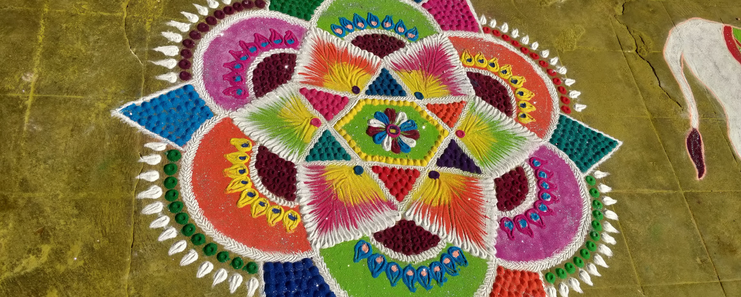
Since women rise very early to clean the surface before making intricate rangoli designs, it signifies purity, good fortune, and developing the aura of positivity.
The design patterns of the Rangoli are symbols of the lotus flower, other floral shapes, peacocks, mangoes, and fish. Although they are traditionally handed over generations, the colors have spiritual benefits. Devotees experience the serenity and the presence of divine energies when they make or see the rangoli designs.
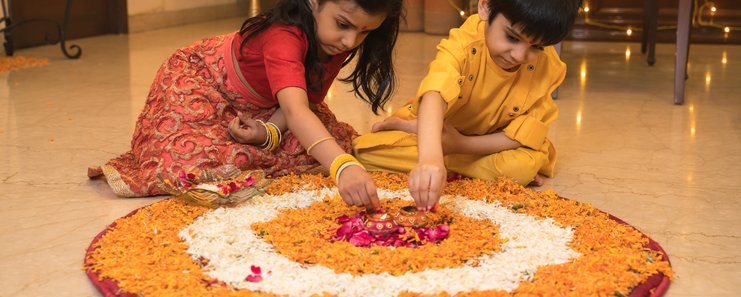
Devotees make pictures of deities, feet symbols of Goddess Lakshmi to welcome the deities into the house, and bless its people.
Traditionally, Rangoli designs were made to welcome guests into the house for a meal and stay. It was also directed to keep evil at bay.
The perishable items used for Rangoli symbolize the transition between life and death and the colors depict love, compassion, and blessings of the divine.
Spirituality and Rangoli
Just like yoga and meditation, Rangoli is an age-old practice that’s transmitted through generations for its deep-rooted spiritual significance. The curved patterns that join the dots reveal the infinity of the universe and also denote sound waves. An auspicious symbol evolved with designs and materials used, Rangoli creates a sense of balance. It brings prosperity, good health, and bliss to the house and transcends space and time.

FAQ on Rangoli
Bihar: Aripan
Aripan is made using rice paste to pray for the fertility of lands.
West Bengal: Alpana
Women who fast make Alpanas to show their respect for deities and to seek their blessings.
Uttar Pradesh: Chowkpurana
The dried rice flour is used to build different art forms and symbolizes creativity.
Andhra Pradesh: Muggu
By drawing Muggu, people used to make a prayer to the smaller creatures like ants, birds, etc.
Odisha: Chita/Jhoti
The semi-liquid rice flour paste called Chita is made at several Odia festivals to welcome Goddess Lakshmi to the house and for the restoration of wealth and peace.
Tamil Nadu: Kolam
Kolam was ideally made to provide a meal to ants, birds, and other small organisms.
Rajasthan: Mandana
Usually made during Navratri and Diwali, Mandana is an auspicious beginning and reflects positivity.
Uttaranchal: Aipan
Having religious significance, Aipan drawings are made in the house yards or beside the front door. The patterns also mark important ceremonies like weddings and other rituals.
The patterns are created using these symbols primarily.
- Dot/Bindu: represents the origin and the ending.
- Triangle/Trikona: signifies the conjoint of two main principles (male and female) of the society
- Square/Catuskona: signifies equality and stability
- Circle: represents life cycle.
The complexity of patterns and symbols and their colors makes the Rangoli interesting. Curved loops, lines, images of deities and Gods, birds, flowers, etc. make it look natural yet intriguing.
The symmetry in the design depicts balance, order, and harmony. The designs, however, symbolize prosperity and good luck.
Different papercuts of Rangoli designs, like lotus flowers, religious symbols, etc. are available in the market. You can use those to make intricate designs by simply sprinkling the flour powders on those ready-made designs.



















